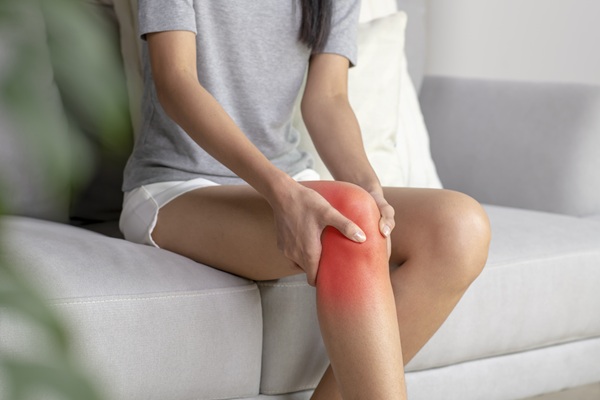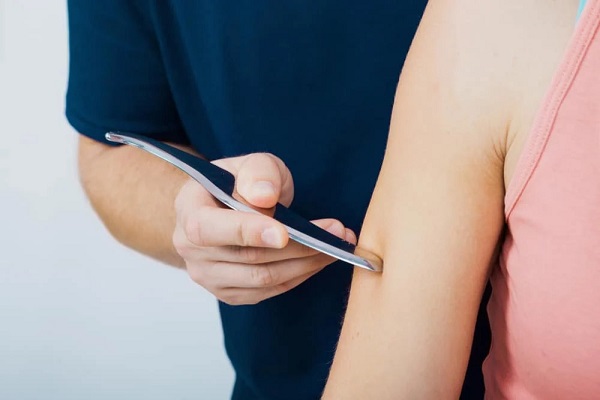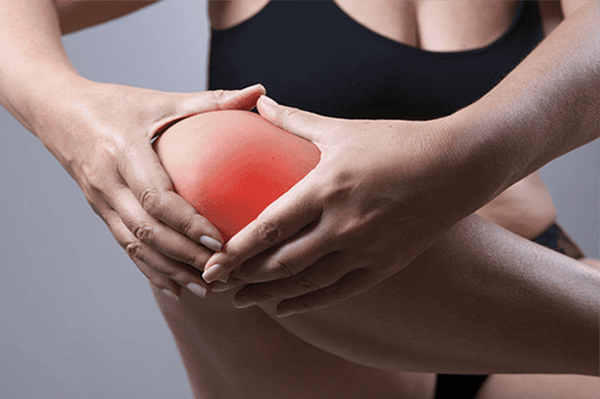An anterior cruciate ligament tear (ACL tear) is a common knee injury, particularly among athletes or individuals engaging in high-intensity physical activities. In Vung Tau City, where residents often participate in sports like soccer, volleyball, or beachside jogging. This article explores the causes, symptoms, and non-surgical treatment options for an anterior cruciate ligament tear, along with strategies to prevent recurrence.
What is an Anterior Cruciate Ligament Tear?

The anterior cruciate ligament is one of the four major ligaments in the knee, stabilizing the joint by connecting the femur to the tibia. According to the Mayo Clinic, an anterior cruciate ligament tear often occurs due to sudden twisting motions, rapid changes in direction, or significant force, such as during jumping or improper landing in sports. This injury is common among athletes playing soccer, basketball, or those jogging in Vung Tau City, where outdoor sports are popular.
Symptoms of an Anterior Cruciate Ligament Tear
An anterior cruciate ligament tear can be identified through the following symptoms:
-
“Popping” sound in the knee: Often heard at the moment of injury.
-
Knee swelling: Swelling appears within hours due to blood or fluid buildup in the joint.
-
Pain and instability: Sharp pain and a feeling of the knee “giving way” during movement.
-
Limited mobility: Difficulty walking, running, or performing twisting motions.
If you experience these symptoms after sports activities in Vung Tau City, consult a doctor for an accurate diagnosis

Causes of an Anterior Cruciate Ligament Tear
An anterior cruciate ligament tear typically results from:
-
Sudden movements: Twisting or rapid changes in direction during soccer or volleyball.
-
Improper landing: Landing incorrectly after a jump or from a height.
-
Direct impact: Significant force to the knee, such as in contact sports.
-
Weak knee muscles: Weak quadriceps or hamstrings increase injury risk.
According to PubMed, female athletes have a higher risk of an anterior cruciate ligament tear due to anatomical and muscular differences.

Non-Surgical Treatment for an Anterior Cruciate Ligament Tear
Not all cases of an anterior cruciate ligament tear require surgery. Non-surgical treatment is often recommended for partial tears (grade 1 or 2) or for individuals not involved in high-intensity sports. Below are the primary methods:
1. R.I.C.E. Method
The R.I.C.E. method (Rest, Ice, Compression, Elevation) is the first step in managing an anterior cruciate ligament tear:
-
Rest: Avoid strenuous activity and limit weight-bearing on the injured leg.
-
Ice: Apply ice packs for 15–20 minutes every 2–3 hours to reduce swelling.
-
Compression: Use an elastic bandage to minimize swelling and support the knee.
-
Elevation: Keep the leg elevated above heart level when resting to reduce fluid buildup.
2. Physical Therapy
Physical therapy is a cornerstone of non-surgical treatment for an anterior cruciate ligament tear. Exercises strengthen the muscles around the knee, improve stability, and restore range of motion. Common exercises include:
-
Quadriceps strengthening: Straight leg raises in a seated position.
-
Hamstring strengthening: Leg curls with resistance bands.
-
Balance training: Standing on one leg to enhance knee stability.
Residents of Vung Tau City can perform these exercises at local gyms or under the guidance of a physical therapist.

3. Knee Bracing
A knee brace stabilizes the joint during recovery, particularly for light activities. Braces should be used as prescribed by a doctor to avoid over-reliance.
4. Chiropractic and Adjunctive Therapies
Chiropractic care can support the treatment of an anterior cruciate ligament tear by improving body alignment and reducing stress on the knee. According to a PubMed study, chiropractic techniques can enhance joint function and reduce pain in some patients. Additional therapies, such as ultrasound or electrical stimulation, may also aid recovery.
5. Nutritional Support
A diet rich in protein, vitamin C, and omega-3 fatty acids promotes soft tissue healing:
-
Protein: Chicken, fish, or beans to repair damaged tissue.
-
Vitamin C: Oranges or bell peppers to support collagen production.
-
Omega-3s: Salmon or chia seeds to reduce inflammation.
Benefits of Non-Surgical Treatment

Non-surgical treatment for an anterior cruciate ligament tear offers several benefits:
-
Avoids surgical risks: Reduces the risk of infection or complications.
-
Faster recovery: Allows return to light activities within weeks.
-
Cost-effective: Eliminates expenses related to surgery or hospitalization.
Residents of Vung Tau City can resume beloved activities like beachside jogging or sports if they adhere to a strict recovery plan.
When is Surgery Necessary?
While non-surgical treatment is effective for many cases, surgery may be required if:
-
Complete tear (grade 3): The ligament is fully torn, causing significant instability.
-
Professional athletes: Those needing to return to high-intensity sports.
-
Combined injuries: Accompanying damage to the meniscus or other ligaments.
Consult an orthopedic specialist to assess the severity of an anterior cruciate ligament tear.

Preventing Recurrence of an Anterior Cruciate Ligament Tear
To reduce the risk of a recurring anterior cruciate ligament tear, consider:
-
Strengthening muscles: Focus on quadriceps, hamstrings, and glutes.
-
Improving movement techniques: Learn proper landing techniques for jumping or running.
-
Thorough warm-ups: Always warm up before sports to prepare muscles.
-
Wearing appropriate footwear: Use supportive athletic shoes for ankle and knee stability.
An anterior cruciate ligament tear is a serious injury but can often be treated effectively without surgery through physical therapy, the R.I.C.E. method, and proper nutrition. In Vung Tau City, combining these approaches with an active lifestyle can facilitate a swift recovery and a return to favorite activities. Consult a doctor and adhere to a recovery plan to ensure a healthy knee and prevent recurrence.
Frequently Asked Questions (FAQ)
1. Can an anterior cruciate ligament tear heal on its own?
Partial tears (grade 1 or 2) may heal with non-surgical treatment, but complete tears often require further intervention.
2. How long does non-surgical treatment take?
Recovery typically takes 3–6 months, depending on the injury’s severity and treatment adherence.
3. Is chiropractic care effective for an anterior cruciate ligament tear?
Chiropractic care can help reduce pain and improve joint function but should be combined with physical therapy.
4. Which foods support recovery from an anterior cruciate ligament tear?
Foods rich in protein (meat, fish), vitamin C (oranges, bell peppers), and omega-3s (salmon, chia seeds) aid tissue repair.
5. How can I prevent an anterior cruciate ligament tear?
Strengthening muscles, improving movement techniques, and thorough warm-ups are the most effective prevention strategies.
Physical therapy is a long-term treatment combining physical therapy with targeted exercises. Patients must remain consistent and follow the prescribed treatment schedule. Reharb & Recovery Nguyen Tung Center is a leading rehabilitation and physical therapy center in Vung Tau. Our physical therapy methods are tailored flexibly to suit each patient’s pain condition and unique physiology.
Free consultation and condition assessment at Andora Orthopedic Clinic:
- Address: 123 Truong Cong Dinh, Vung Tau Ward, HCM City
- WhatsApp/Viber: (+84)87724 7272
- Facebook | X (Twitter) | Tiktok
Learn more about Musculoskeletal Disorders and Nutrition plans to effectively care for and restore musculoskeletal health.









